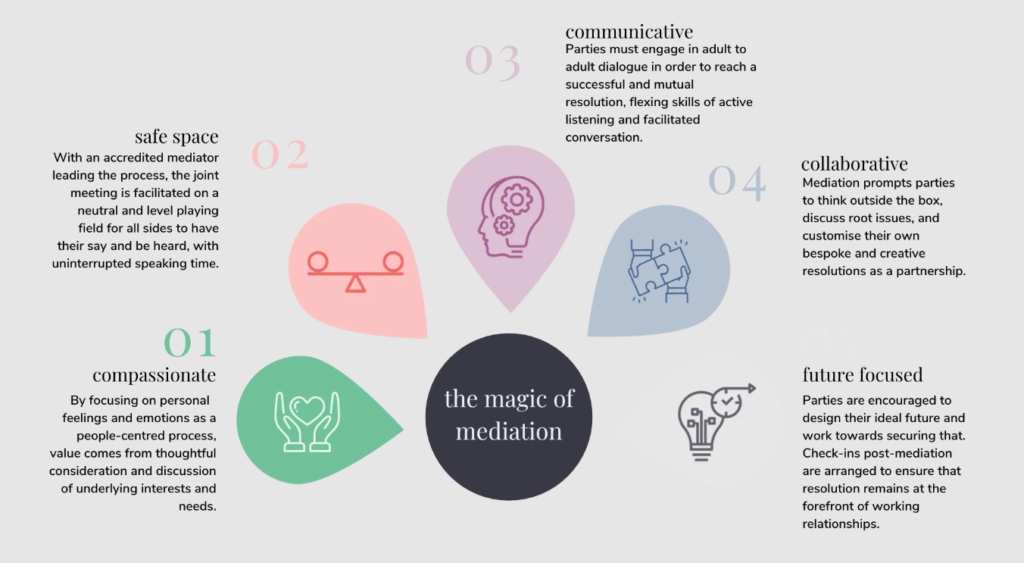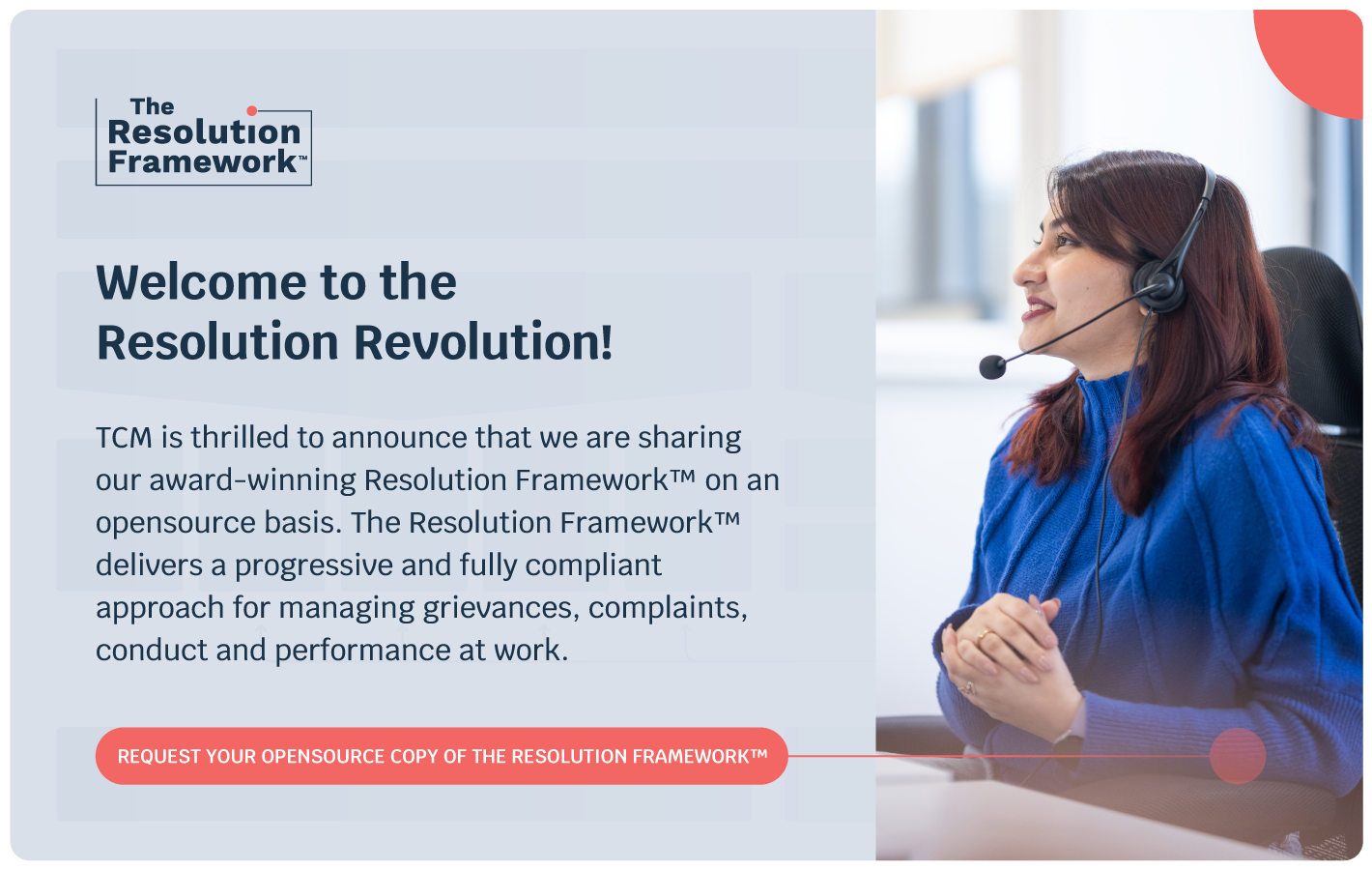
The purpose of workplace mediation is, in a nutshell, to resolve conflict. By settling grievances, this naturally fosters a healthier, happier, and more harmonious workplace. But it goes much further than that. Many companies anticipate a positive, forward-facing cultural shift within their organisations following an adoption of alternative dispute resolution.
During mediation, we work with everyone involved in the situation to explore the parties’ underlying issues, needs, goals and expectations. We apply a series of safe and constructive approaches to help the parties listen to one another and we support them as they identify areas of commonality and difference.
We often describe mediation as an attempt to build bridges. In many respects, this is true, as mediation helps people bridge the gaps which remain unresolved in workplace conflict. Affirmative behaviours of collaboration, communication, compassion, and creativity are learned and practised by involved parties, facilitated by an external and impartial mediator. Value arises from thoughtful consideration and discussion of underlying interests and needs.
Here at The Mediation Company, we look forward to supporting you through your resolution journey.
The magic of mediation


The benefits
What is mediation?
Mediation is often described as a process whereby a neutral third party intervenes in a workplace conflict or dispute to assist the parties in reaching a satisfactory outcome. It is a structured process which enables parties to identify, consider and discuss their own and each other’s current and future needs.
And what are the benefits?
- Our mediators encourage and facilitate open and honest communication which often leads to increased awareness, understanding and empathy between parties.
- It places responsibility for the resolution directly with the parties.
- It creates a safe place for all sides to have their say and be heard, with uninterrupted speaking time.
- Disputes are halted before they escalate out of control.
- Mediation reduces the stress and anxiety associated with conflict.
- It reduces the risk of litigation and costs of conflict.
- Mediation helps to cultivate a happier, healthier and more harmonious working environment.
Did you know that we also have an unprecedented 93% success rate.

Putting people first is at the core of everything we do. Remember it’s people you are dealing with, not statistics. Treat them as humans – with kindness, compassion and integrity – and watch fear subside in the face of wellbeing, productivity and success.

Be part of the movement
We’d love to hear from you if you have a question, need some guidance in booking one of our courses or are looking for a bespoke package, tailored to your organisation.
Please provide your details in the form and one of our experienced team will be in touch.



